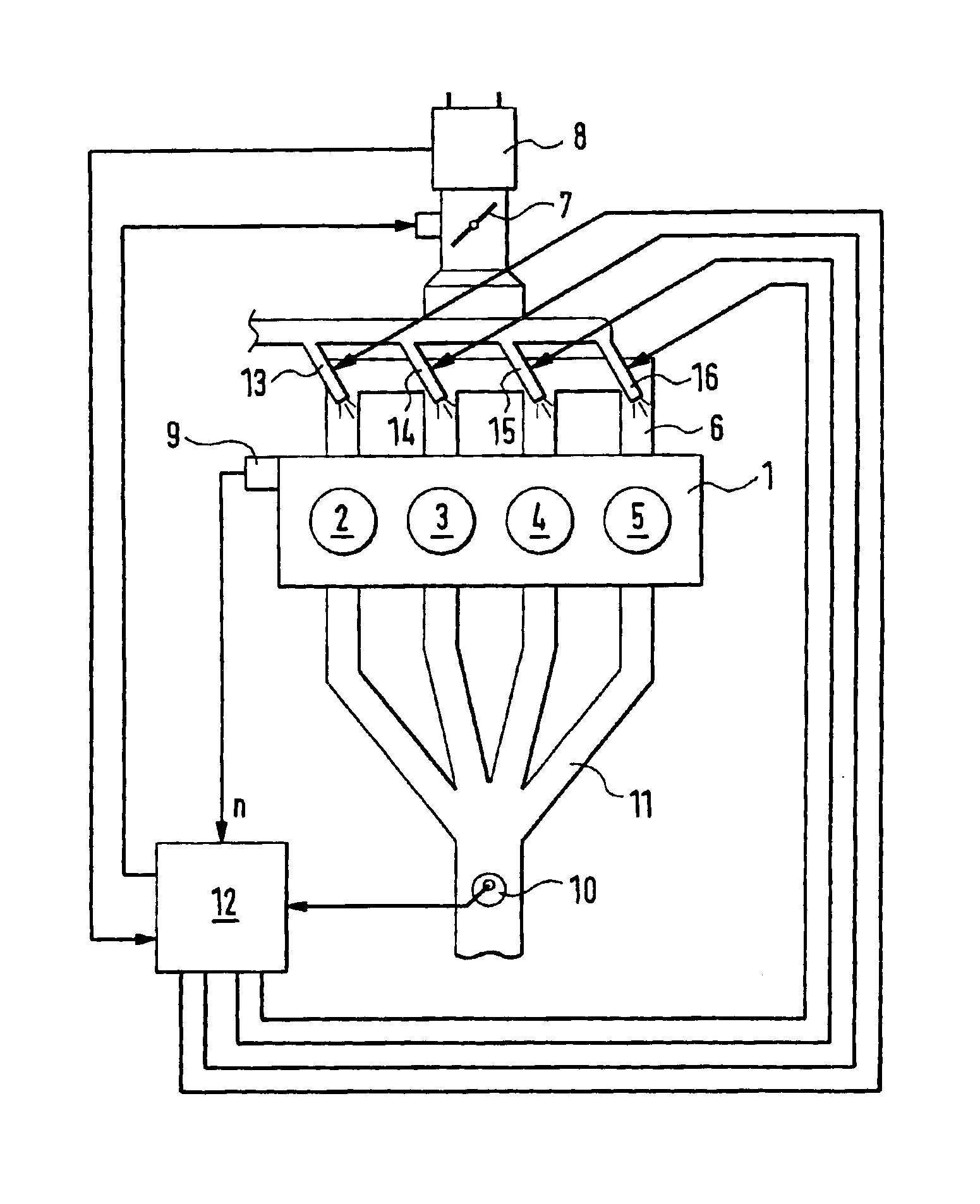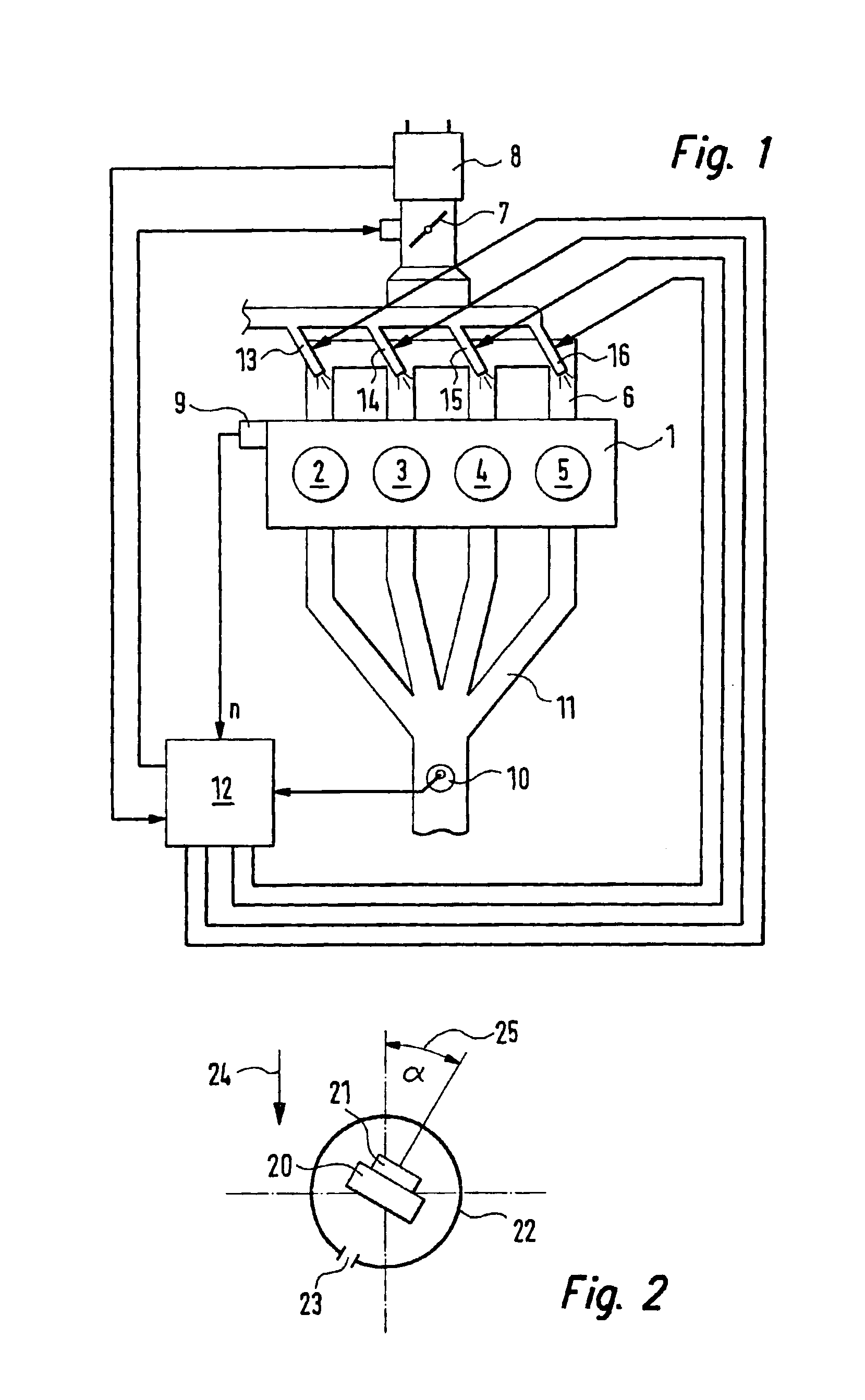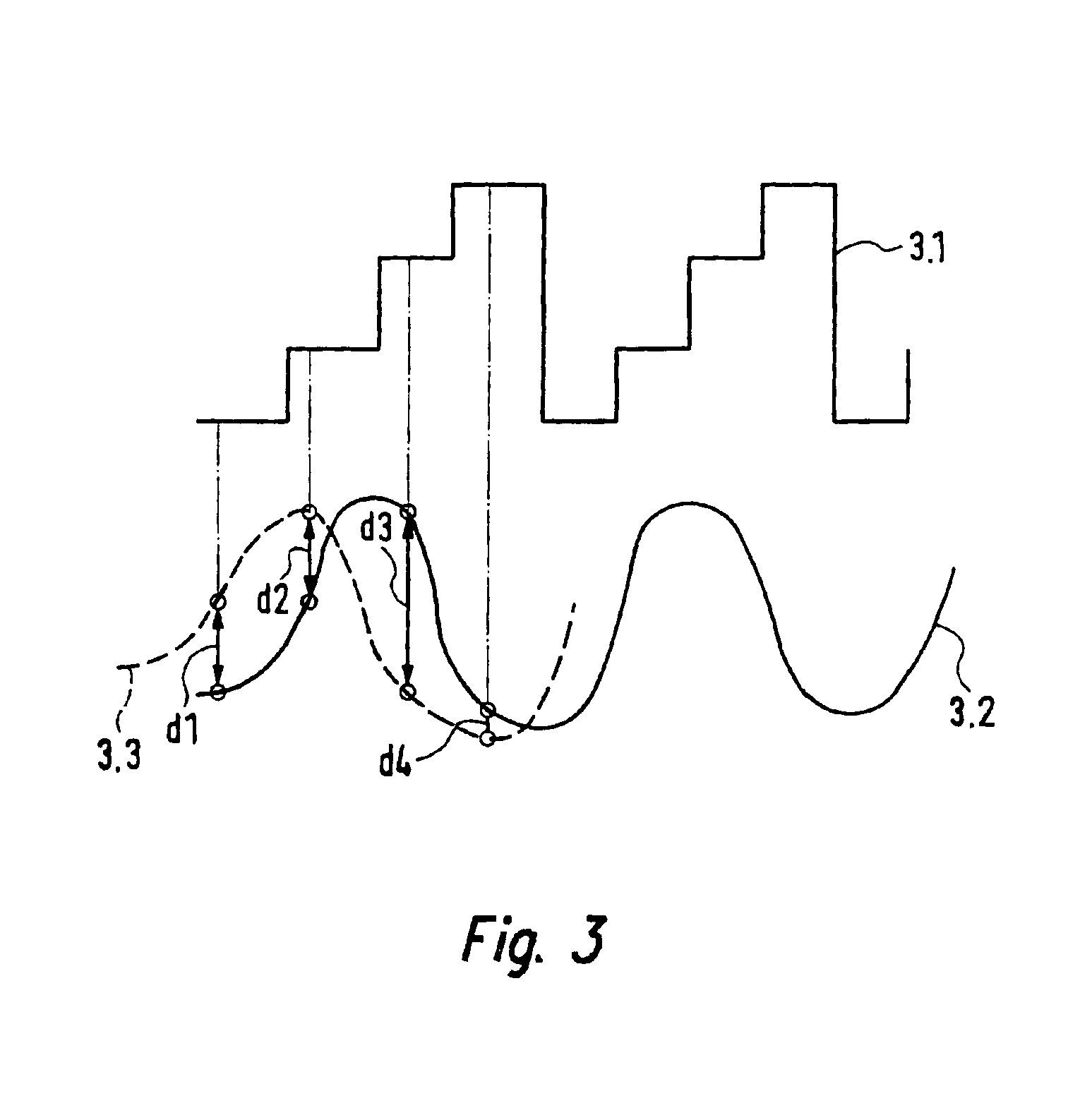Method for determining the fuel/air ratio in the individual cylinders of a multi-cylinder internal combustion engine
a multi-cylinder, fuel/air technology, applied in the direction of electrical control, process and machine control, instruments, etc., to achieve the effect of little storage spa
- Summary
- Abstract
- Description
- Claims
- Application Information
AI Technical Summary
Benefits of technology
Problems solved by technology
Method used
Image
Examples
Embodiment Construction
[0018]Numeral 1 in FIG. 1 represents an internal combustion engine having four cylinders 2, 3, 4 and 5. The cylinders are supplied with air or fuel / air mixture by an intake manifold 6. The quantity of air drawn in by the cylinders is controlled by an air quantity control element 7, for instance, a throttle valve. Alternatively, the quantity of air flowing into the cylinders may also be controlled by a variable valve timing. An air quantity meter 8 measures the quantity of the air drawn in by the internal combustion engine. The rotational speed n of the internal combustion engine is recorded by a rotational speed sensor 9. An exhaust gas sensor 10 is used to record the ratio of fuel to air, and it is situated in an exhaust gas system 11 at a mounting location which, as viewed in the direction of the exhaust gas flow, lies behind the confluence of the exhaust gases of the individual cylinders to form an overall exhaust gas flow. From measured operating parameters of the internal combu...
PUM
 Login to View More
Login to View More Abstract
Description
Claims
Application Information
 Login to View More
Login to View More - R&D
- Intellectual Property
- Life Sciences
- Materials
- Tech Scout
- Unparalleled Data Quality
- Higher Quality Content
- 60% Fewer Hallucinations
Browse by: Latest US Patents, China's latest patents, Technical Efficacy Thesaurus, Application Domain, Technology Topic, Popular Technical Reports.
© 2025 PatSnap. All rights reserved.Legal|Privacy policy|Modern Slavery Act Transparency Statement|Sitemap|About US| Contact US: help@patsnap.com



